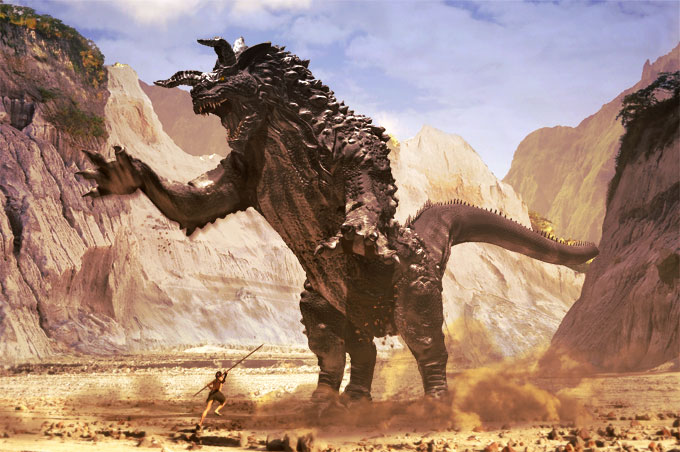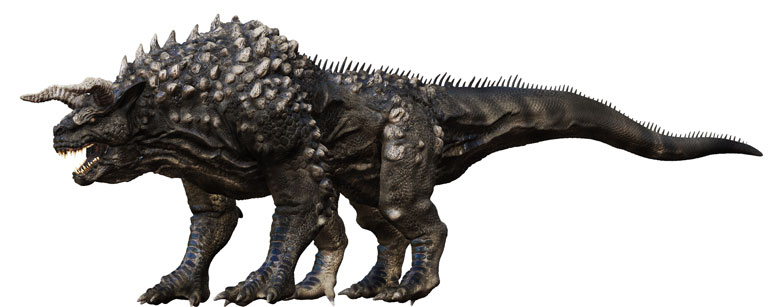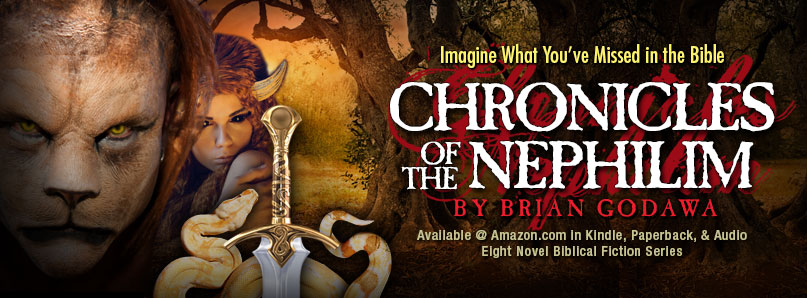
Behemoth as he appears in the novel series Chronicles of the Nephilim. Available on Amazon.com
In previous posts, I talked about how the Bible subverted Ba’al the storm god and Leviathan, the sea dragon of chaos. Scripture redeems pagan imagination by appropriating imagery well known to Israel’s neighbors and reinvesting it with new meaning that supports its own worldview. There is another mythical creature that shows up in scripture as a chaos creature: Behemoth.
The one place in Scripture where this huge beast shows up is in God’s discourse with Job about God’s unapproachable incomparable powers of creation:
Job 40:15–24
“Behold, Behemoth,
which I made as I made you;
he eats grass like an ox.
Behold, his strength in his loins,
and his power in the muscles of his belly.
He makes his tail stiff like a cedar;
the sinews of his thighs are knit together.
His bones are tubes of bronze,
his limbs like bars of iron.
“He is the first of the works of God;
let him who made him bring near his sword!
For the mountains yield food for him
where all the wild beasts play.
Under the lotus plants he lies,
in the shelter of the reeds and in the marsh.
For his shade the lotus trees cover him;
the willows of the brook surround him.
Behold, if the river is turbulent he is not frightened;
he is confident though Jordan rushes against his mouth.
Can one take him by his eyes,
or pierce his nose with a snare?
The most common interpretations of the identity of this monster by Biblical scholars is a hippopotamus, a crocodile, or a water buffalo. Young earth creationists argue that it is a sauropod dinosaur.[1] All of these seek to understand the creature as a real beast that existed in Bible times. Ancient Near Eastern scholar John Day dismisses these naturalistic interpretations in favor of a mythological picture of a chaos monster. There is no paleontological evidence of dinosaurs coexisting with humans. Hippopotamuses and water buffalos do not have strong bones, sinewy muscles, or tails like a cedar. Crocodiles are carnivores and do not eat grass.[2] But more importantly, unlike Behemoth, all of these animals are easily caught by man in contrast with Job’s emphasis that only God can do so. And lastly, none of them hold pride of status as “the first of the works of God.”[3]
Day argues that Behemoth is a mythological chaos monster that represents the Jewish demonization of pagan deities and symbolizes the subjugation of creation by God. He points out that Behemoth in this Job passage is coupled with the mythical chaos monster Leviathan in the verses following Behemoth (Job 41).
Later Jewish texts also understood Behemoth to be coupled with Leviathan as chaos monsters of creation with eschatological references to future judgment:
1 Enoch 60:7-8, 24
On that day, two monsters will be parted—one monster, a female named Leviathan, in order to dwell in the abyss of the ocean over the fountains of water; and (the other), a male called Behemoth, which holds his chest in an invisible desert whose name is Dundayin, east of the garden of Eden…“These two monsters are prepared for the great day of the Lord (when) they shall turn into food.[4]
God is using these symbols of creative power over Chaos to close the mouth of Job’s complaints. Leviathan and Behemoth were “the first of the works of God” (40:19) and “the king over all the sons of pride” (41:34) because “the powers of chaos were primeval in origin.”[5] But fear not, God created them, God subjugated them, and God will turn them into a feast at the end of time.
Day then shows where this coupling of Leviathan and Behemoth has its origin, in two Canaanite texts of Ugarit where the goddess Anat is described as defeating Leviathan, “the dragon,” “the crooked serpent, the tyrant with seven heads,” and “El’s calf Atik” also called Ars (the ox-like Behemoth of Job 40:15).[6] Kenneth Whitney shows an established 2nd Temple Rabbinic tradition of Leviathan and Behemoth as companions of destruction in this same manner, thus the bovine nature of the amphibious creature in the Chronicles of the Nephilim.[7]
Day then concludes, “The reason for the inclusion of the sections on Behemoth and Leviathan in Job 40-1 is to drive home the point that, since Job is unable to overcome them, how much less can he hope to overcome in argument the God who defeated them.”[8]
In Enoch Primordial, and Noah Primeval, the first two novels of Chronicles of the Nephilim, I took liberties to alter this monster’s description somewhat in order to make him more ferociously carnivorous, but he remains a monster of chaos that is held at bay by the mountainous gates of a hidden valley of God’s creation.
[1] http://www.answersingenesis.org/articles/tj/v15/n2/behemoth
[2] Day ignores the dinosaur hypothesis. There remains no paleontological evidence of dinosaurs coexisting with humankind. And young earth creationists admit there is no known species of sauropods that fits all the details of Job 40.
[3] John Day, God’s Conflict with the Dragon and the Sea: Echoes of a Canaanite Myth in the Old Testament (University of Cambridge Press, 1985) 62-87.
[4] James H. Charlesworth, The Old Testament Pseudepigrapha: Volume 1, (New York; London: Yale University Press, 1983) 40-42. See also 2 Bar. 29:4; 4 Ez. 6:49, 5.
[5] Day, God’s Conflict, 80.
[6] Day, God’s Conflict, 80-81.
KTU I.3.III.43-4
Surely I lifted up the dragon…
(and) smote the crooked serpent,
the tyrant with the seven heads.
I smote Ars beloved of EI,
I put an end to El’s calf Atik.
KTU 1.6.VI.51-3
In the sea are Ars and the dragon,
May Kothar-and-Hasis drive (them) away,
May Kothar-and-Hasis cut (them) off.
[7] Kenneth William Whitney, Jr., Two Strange Beasts: A Study of Traditions Concerning Leviathan and Behemoth in Second Temple and Early Rabbinic Judaism, Cambridge, Massachusetts: Harvard University, 1992.
[8] Day, God’s Conflict, 87.



4 comments on “Of Myth and the Bible – Part 5: Behemoth”
If the Bible can be trusted – then yes, dinosaurs and humans did coexist.
The Behemoth looks like a Deathclaw tho
Comments are closed.